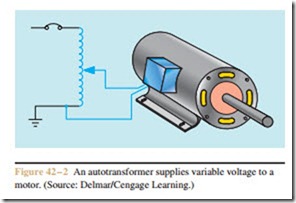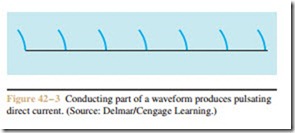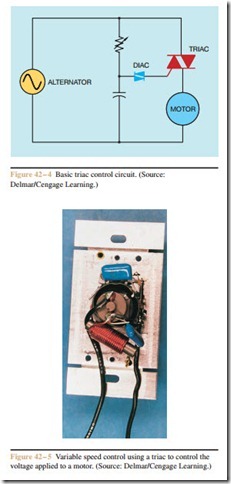Voltage Control Methods
There are different methods of obtaining a variable AC voltage. One method is with the use of an auto- transformer with a sliding tap (Figure 42–1). The sliding tap causes a change in the turns ratio of the trans- former (Figure 42–2). An autotransformer is probably the most efficient and reliable method of supplying variable AC voltage, but they are expensive and require a large amount of space for mounting.
Another method involves the use of a solid-state device called a triac. A triac is a solid-state device similar to a silicon controlled rectifier (SCR), except that it will conduct both the positive and negative portions of a waveform. Triacs are commonly used in dimmers employed to control incandescent lighting. Triac light dimmers have a characteristic of conducting one half of the waveform before the other half begins conducting. Since only one half of the waveform is conducting, the output voltage is DC, not AC (Figure 42–3). Resistive loads such as incandescent lamps are not harmed when
direct current is applied to them, but a great deal of harm can occur when DC voltage is applied to in inductive device such as a motor. Only triac controls that are designed for use with inductive loads should be used to control a motor. A basic triac control circuit is shown in Figure 42–4. A triac variable speed control for small AC motors is shown in Figure 42–5.



